New Google Jobs UX visible in Germany! Is this the roll-out?
Today, I noticed the new Google Jobs UX being visible for searches in Germany. I cannot get to the old UX anymore, making me think this is the official launch!
Background
Google already tested the new UX in Austria back in 2023
I wrote about the test in 2023 on Linkedin (there is also a video recording of the UX).

I also did a deep dive a week later here because I noticed that Google was testing some new SERP features related to job site filters. You can still see the original post here:

This is how Google Jobs looks today in Germany
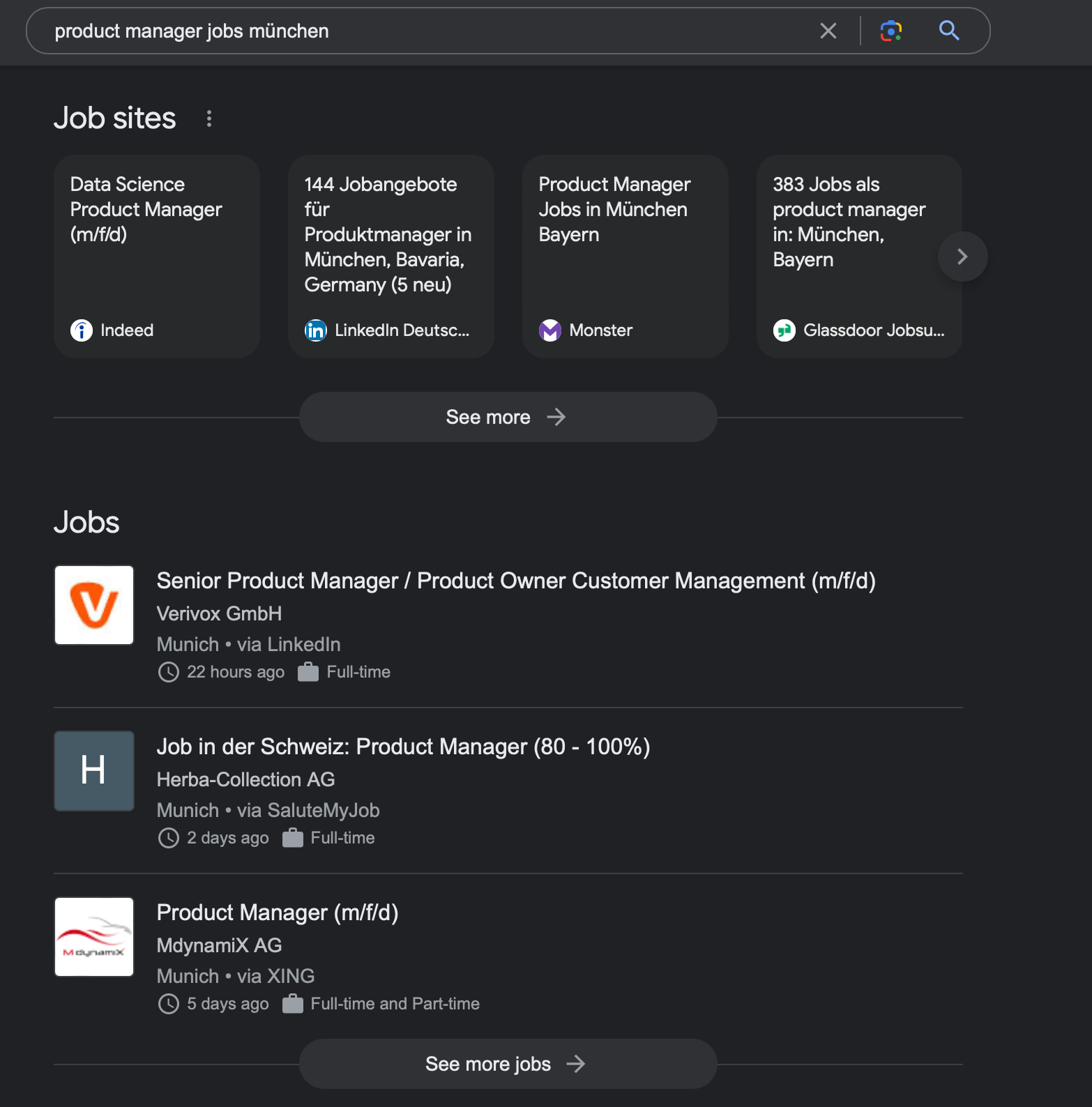
For comparison, here is the old UX:
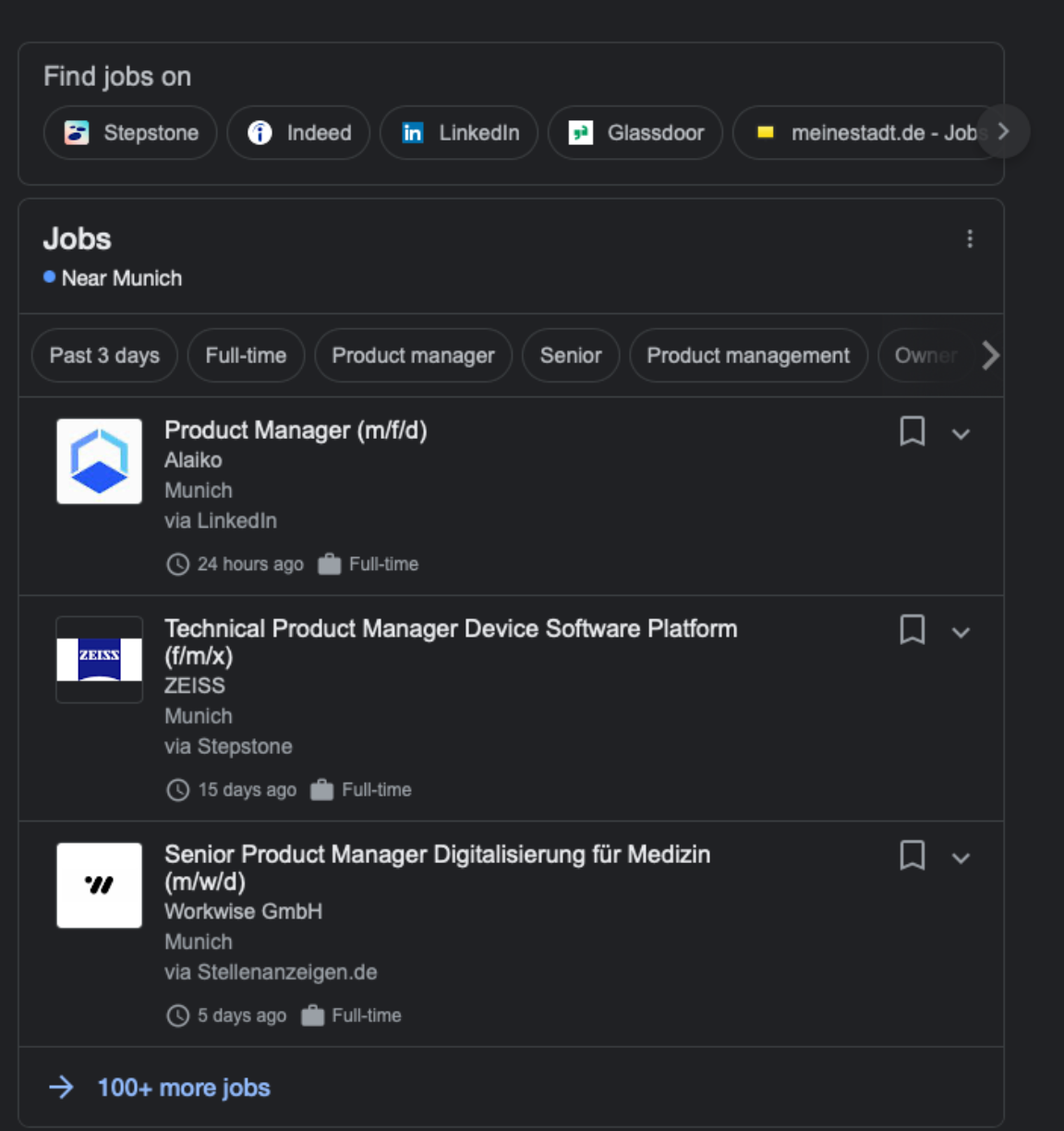
What has changed in the Google Jobs UX in Germany in January 2024
Exciting! Google Jobs is getting an official massive update for the first time in almost SEVEN years. So what is changing?
This is the TL;DR summary; scroll below for a deep dive:
Introduction of SERP Features:
- A new prominent"Job sites" SERP feature placed at the top of search results above organic and Google Jobs
- The "Job Sites" filter leads to a new search result page for search result pages of job sites only
- "Jobs" filter loads Google Jobs
Changes in Google Jobs UX:
- Removal of the "Find jobs on" section.
- Reduced screen space for Google Jobs UX (about 30-40% less).
- Removal of bookmarks and job filters.
- Clicking on a job opens it in a side tab, keeping users longer on SERP pages.
- Scrolling down the job ad page shows additional organic search results.
- Removal of the job alert functionality, hinting at the potential end of Google Job Alerts.
- Enhanced focus on job quality with options for feedback on expired jobs and job content issues.
New SERP Features on Google related to job search!
First, the "Find jobs on" section is now gone and is substituted by a SERP feature:
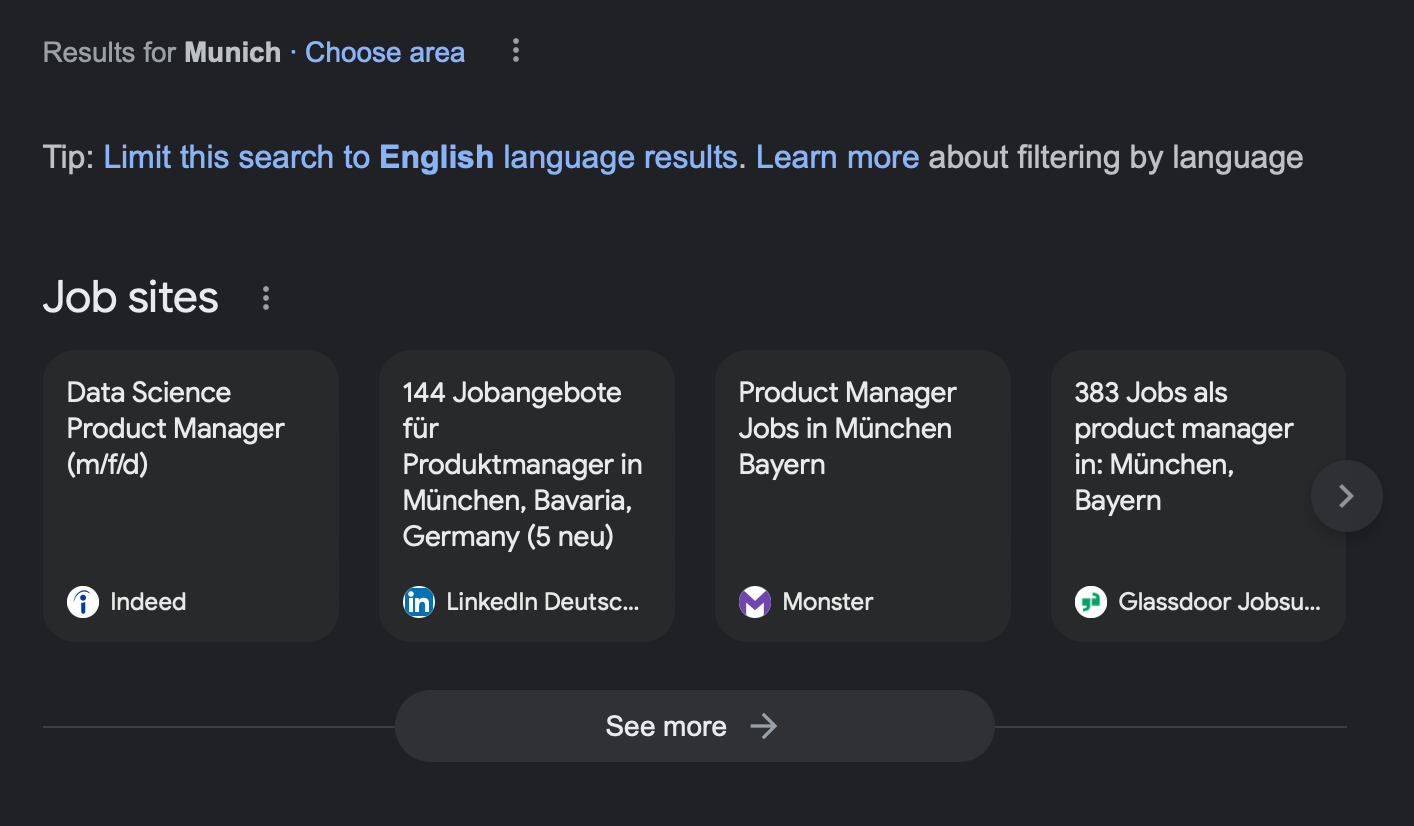
What are SERP features?
SERP features are elements of a search engine’s search result page (SERP) that aren’t traditional organic search results.
Why are SERP features important?
SERP features are crucial in SEO as they enhance the searcher experience and Google's relevancy, offering opportunities for increased traffic, brand recognition, and visibility for websites featured. However, they can also lead to reduced clicks on organic search results, as evidenced by a 2020 study showing 65% of Google searches ending on the search results page, often due to direct answers provided in these features.
You probably already know some of them – Knowledge Panel, People Also Ask, Videos, etc. They have been growing in numbers year after year.
What does the implementation look like?
Traditionally, in Europe, Google Jobs had a list of job sites shown above the jobs list called “Find jobs on”:

This was an excellent feature for brand traffic, as a click on these icons directed job seekers directly to the job site.
What is the difference today?
A couple of things worth mentioning:
- The “Job sites” SERP feature is shown separately from Google Jobs and at the top of the search results, even above organic. In the tests in 2023, this feature was visible after the first three organic search results.
- It is significantly more prominent than the old UX and includes the meta title of the SERP pages.
- Clicking on “see more” sends the user into a job site filter (also a new SERP feature):

What is the job site filter?
When you search on Google, you might get a list of filters that help you narrow your search. Well, now you have a dedicated filter for job sites!
How does the job site filter work?
By showing only search results from job sites! It is mostly search pages with job listings relevant to the search. For example, when searching for “product manager” and “München,” I get links to the search pages from Indeed, Stepstone and Linkedin that match this search query.
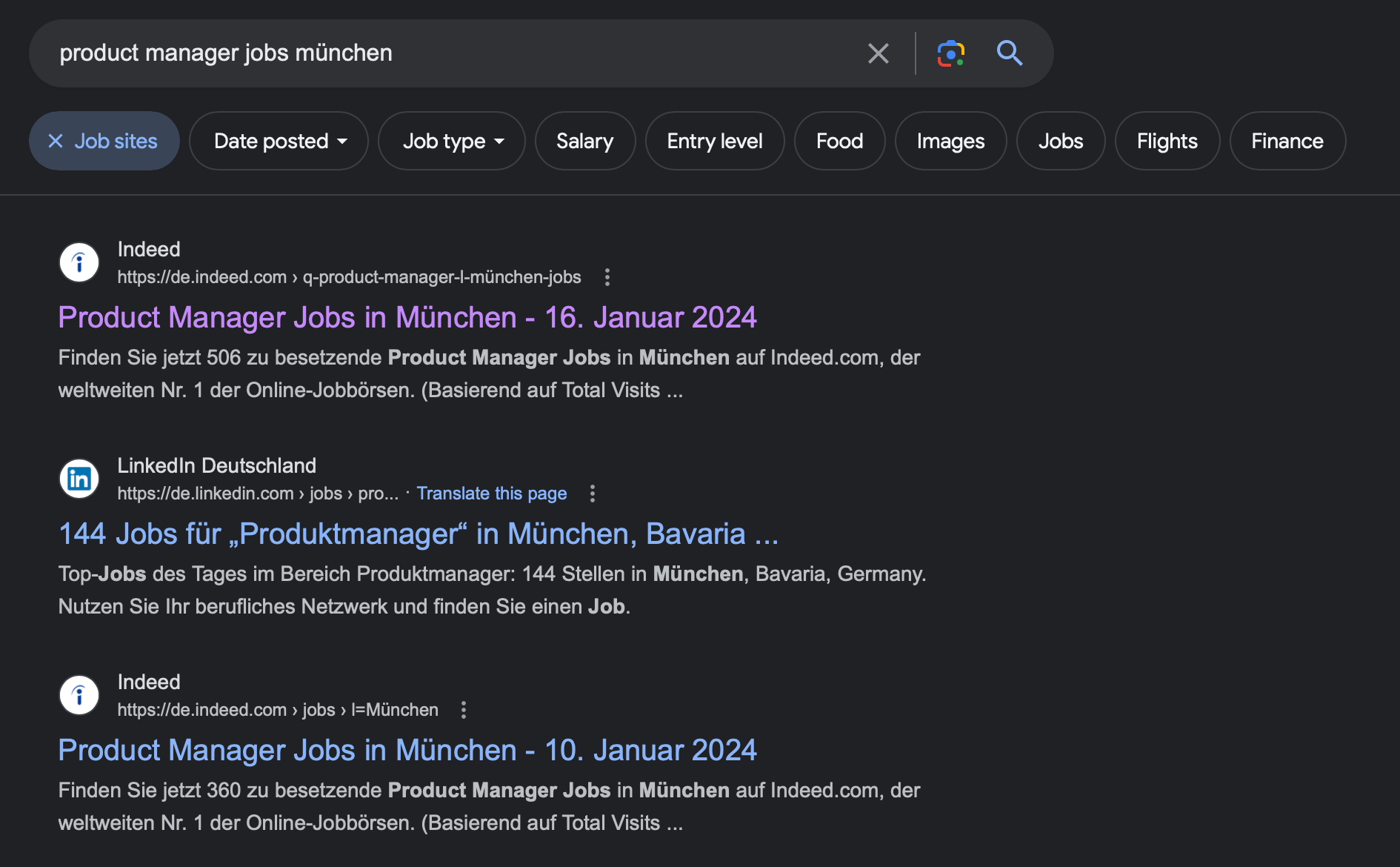
How do the new SERP features impact Job site SEO and organic traffic?
The Job sites feature is shown very early (above all organic search results), so it is pretty prominent. It will get a lot of usage.
Here is the most important takeaway:
As a job board or an aggregator, your job search result pages have always been critical drivers of organic traffic. With these changes, having well-structured and relevant search pages becomes strategically essential because you have two more areas to compete.
Google Jobs UX Changes
Now that we have covered the SERP Features let's look into the actual changes of the UX:
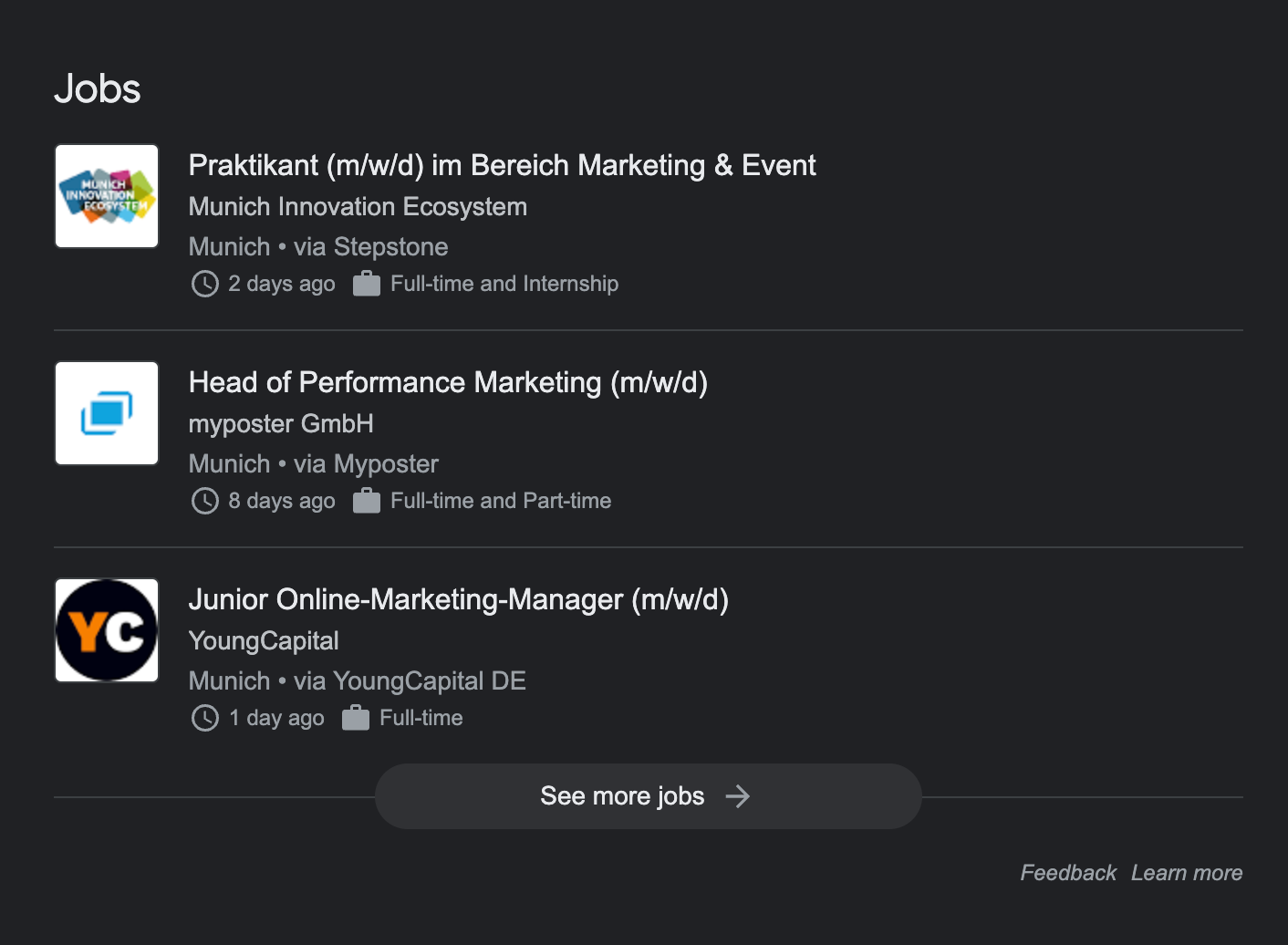
Immediate reaction:
- The real estate is much smaller and takes less screen space (almost 30-40% less).
- Bookmarks are gone
- Job filters are gone
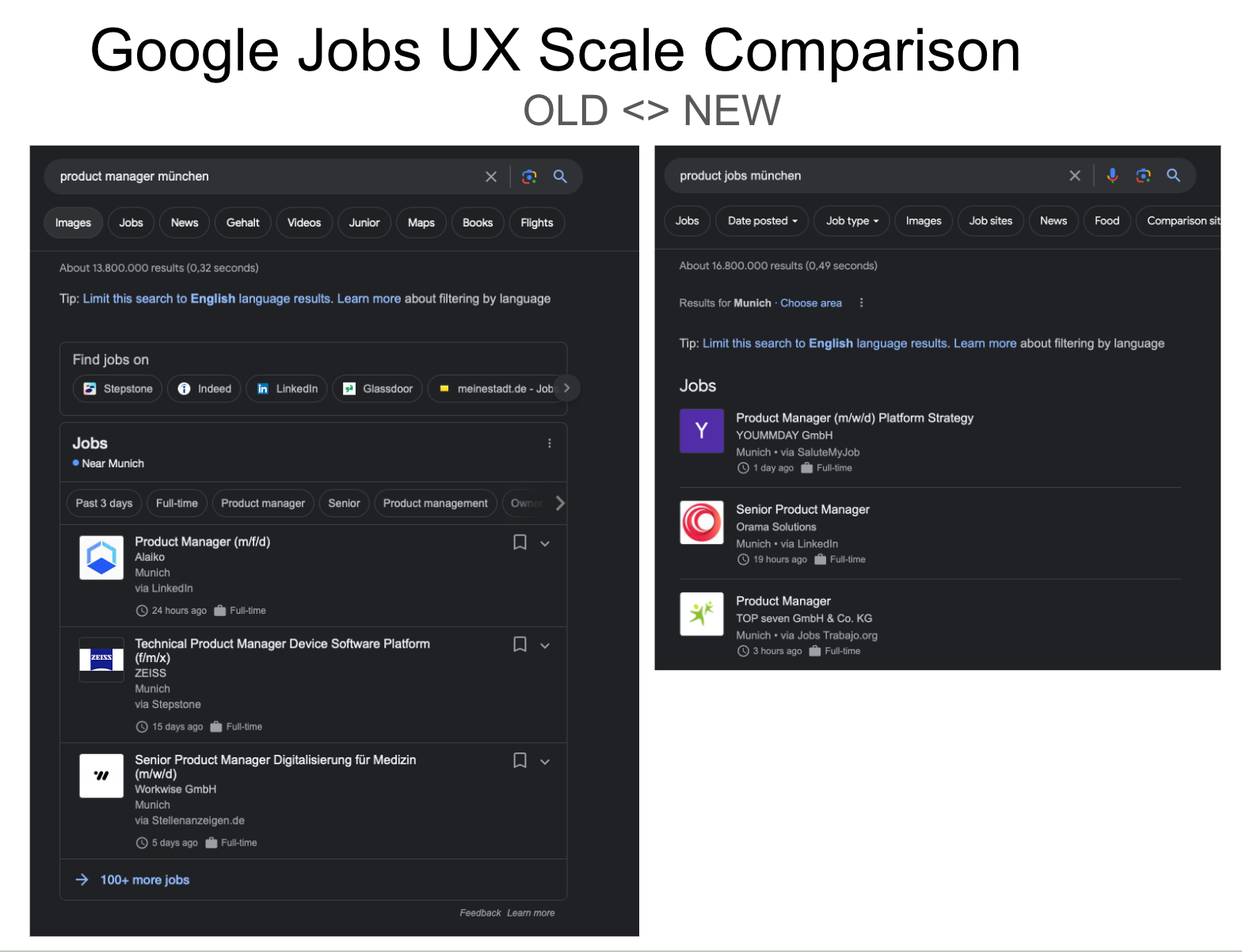
What about user interaction?
A few large changes can be observed here too:
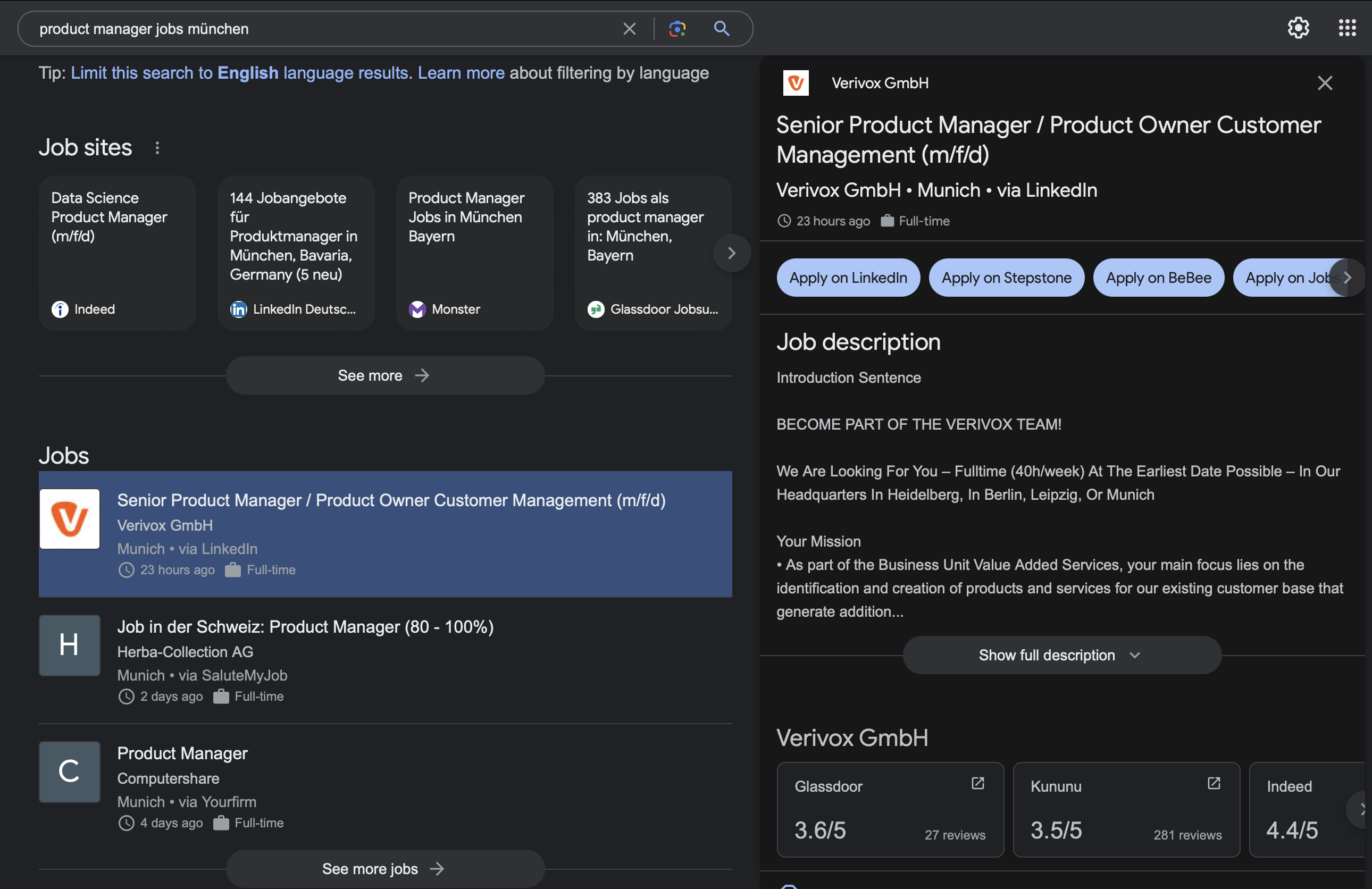
Clicking on a job does not load the Google Jobs UX but instead loads the job in a side tab. This is a significant change and will keep the users longer in the SERP pages rather than the Google Jobs feature.
Scrolling down to the bottom of the job description shows additional search results, which was more typical for the US implementation of Google Jobs:
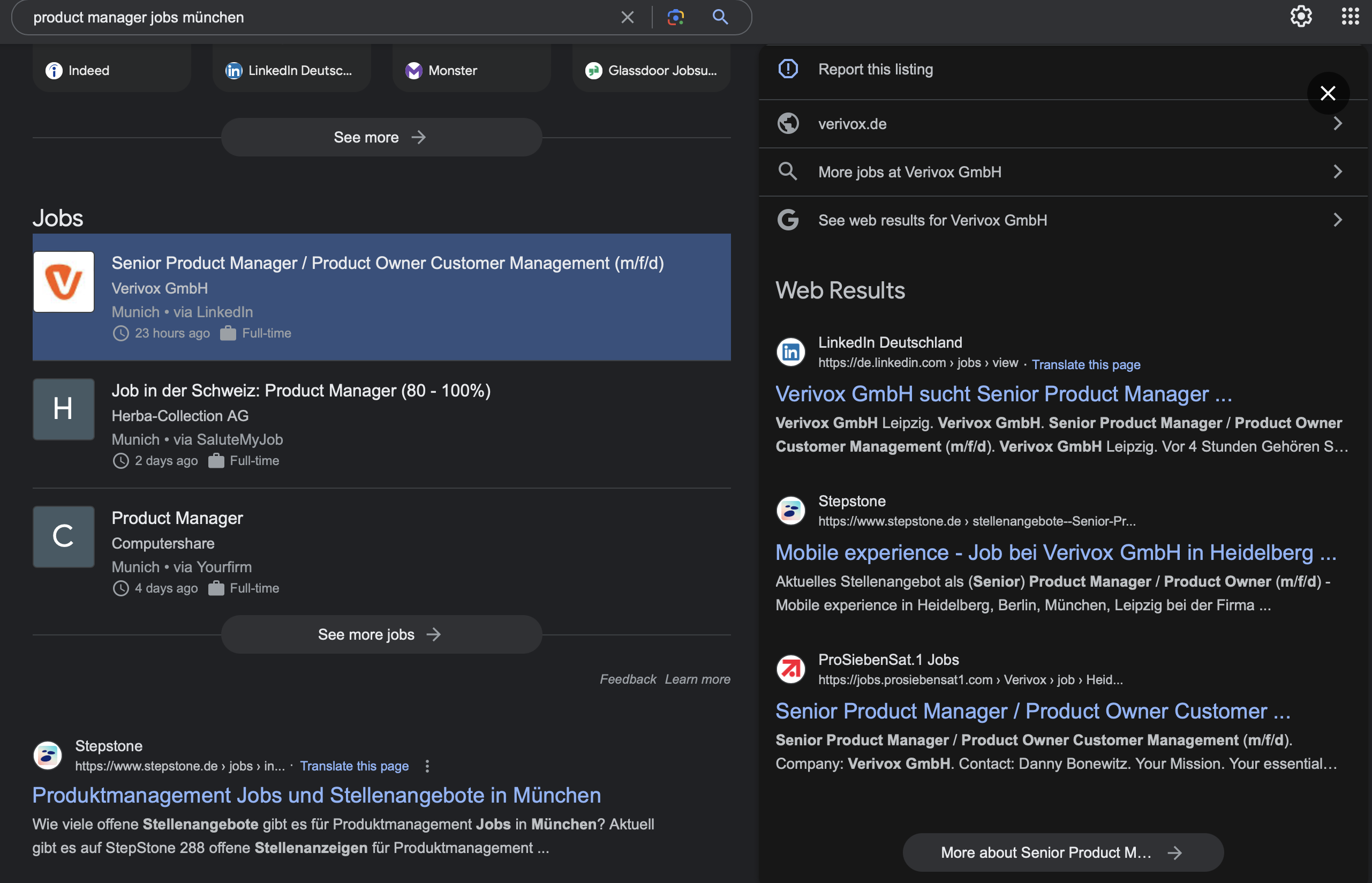
If you want to open the Google Jobs feature fully, you need to click on the "See more jobs" button:
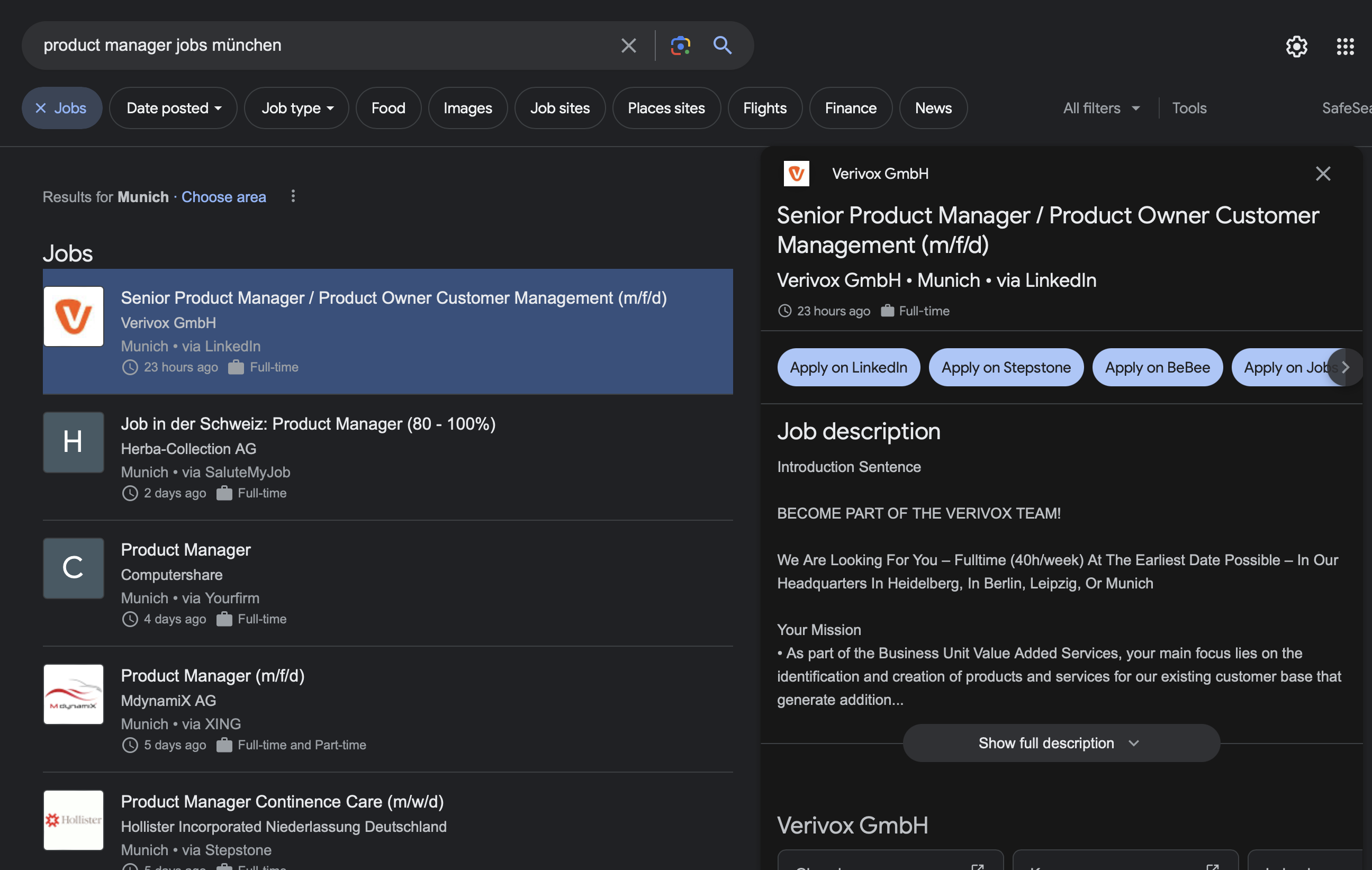
Here we have again a couple of changes worth noting:
Most of the original filters are gone, in the old Google Jobs implementation, we had a lot of filters related to job title, industry, company, etc:

The job alert functionality is also gone! Does that mean that Google is killing Job Alerts? I think so. This will reduce organic traffic from Google Jobs long-term. I am still receiving emails right now, so I guess the changes are not fully implemented yet.
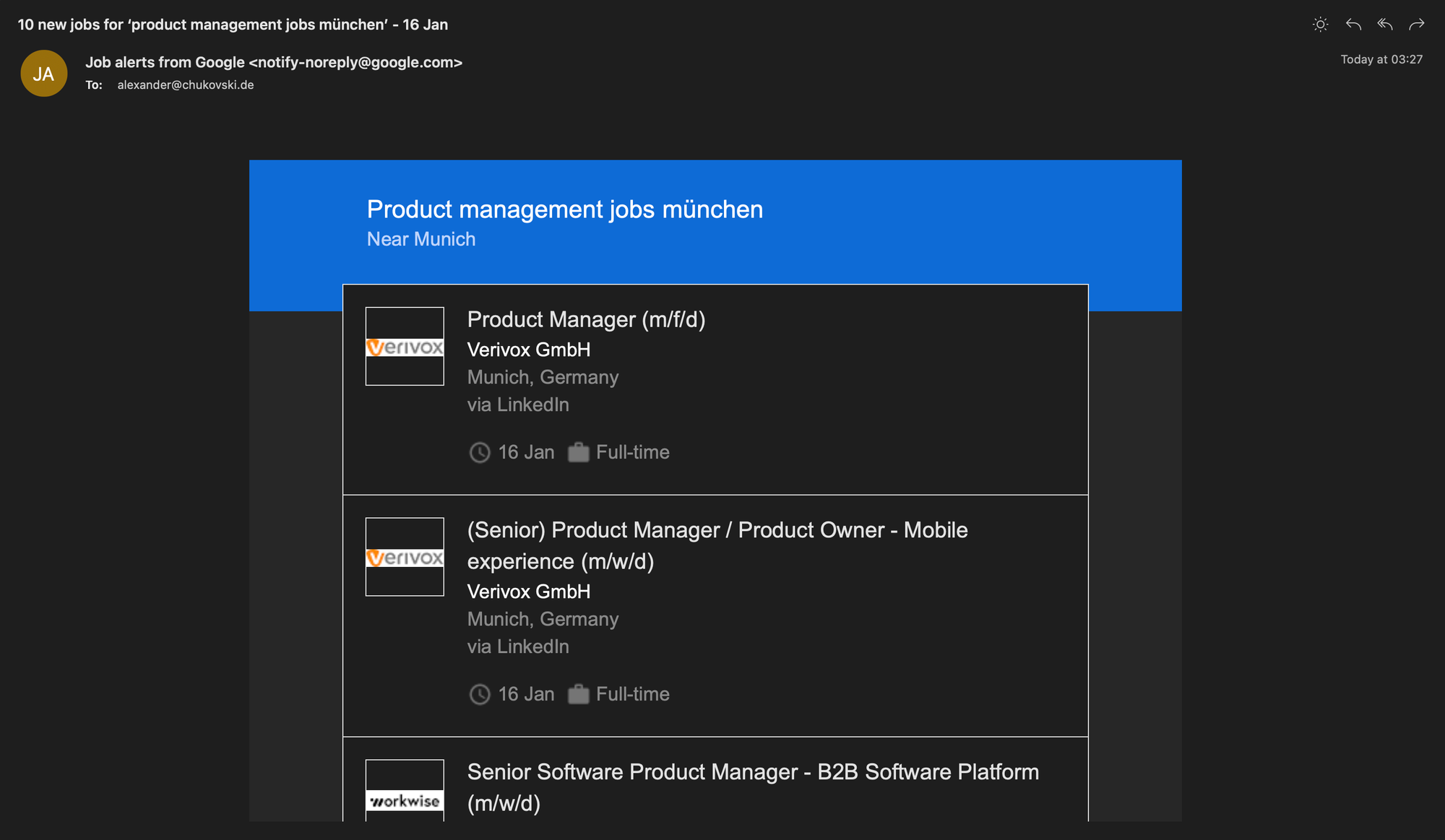
A new report jobs UX:
Notice how the report includes options to give feedback about expired jobs, as well as issues with the job content. It is more prominent than before and focuses on job quality:

Here is the old report jobs UX for comparison. Notice the lack of predefined options.
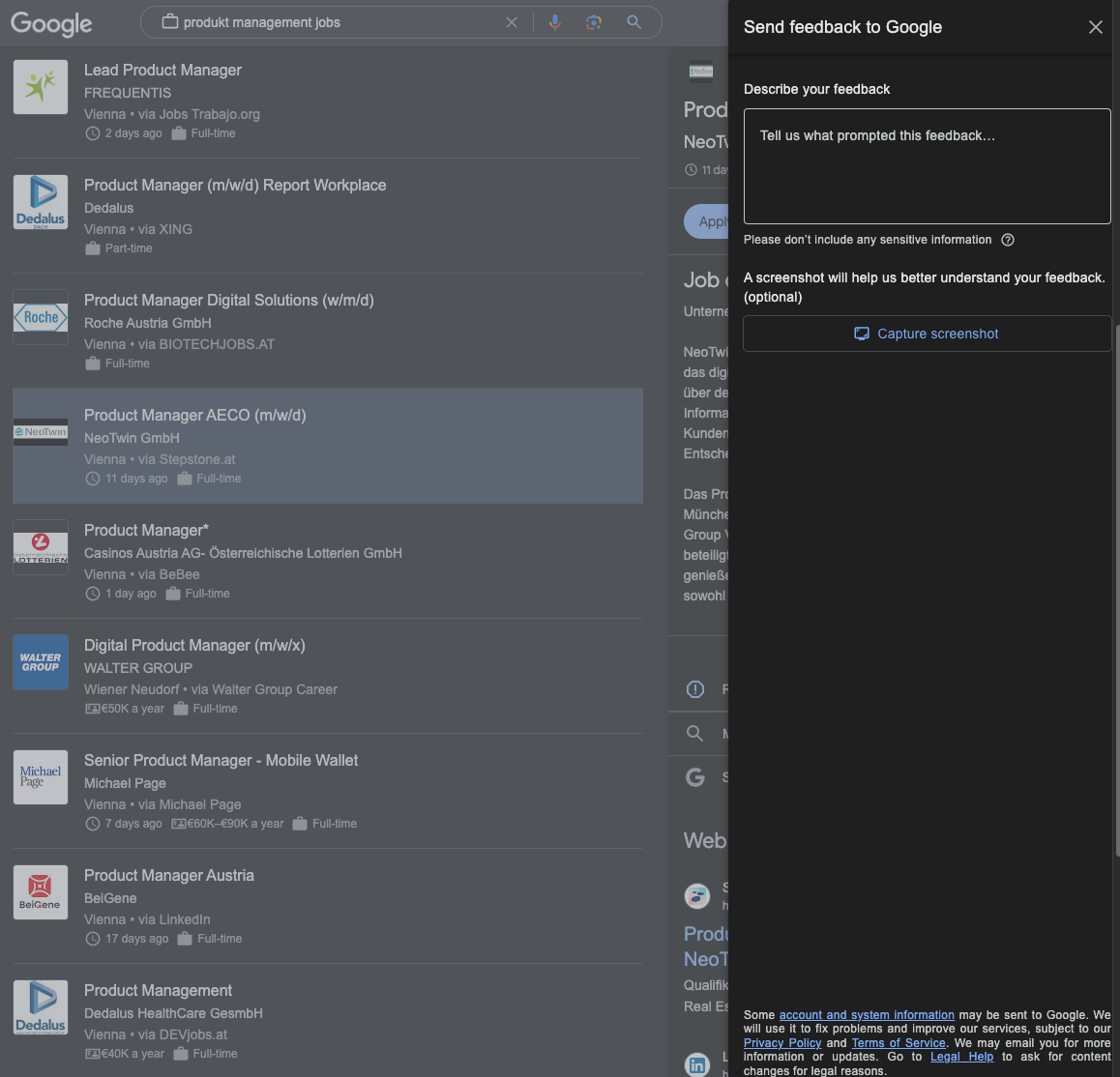
Conclusion
These changes reflect Google's ongoing efforts to enhance search efficiency and user experience. These changes impact how job boards and aggregators should approach SEO and online visibility.
The decrease in screen space allocated to Google Jobs UX (about 30-40% less) signifies a shift in focus towards SERP features and potentially indicates a strategy to keep users on Google's pages longer and make space for the future Google Job Ads features.
The introduction of SERP features and the new job site filter streamline the job search process, making it is more efficient and user-friendly. These features allow users to accessrelevant job listings directly from the search results, improving the overall search experience.
With the prominence of the Job site's SERP feature, job boards and aggregators must focus more on optimizing their search pages. This shift emphasizes the importance of SEO strategies that cater to SERP features, as they play a significant role in visibility and traffic.
The new layout and features may lead to a change in traffic patterns for job sites. The prominent display of job sites above organic search results could increase traffic to those sites, but removing certain features like job alerts might decrease
long-term organic traffic from Google Jobs. No one knows how much traffic is
being brought by email.
The new report jobs UX, with options for feedback about expired jobs and job content issues, indicates a stronger emphasis on job quality.
With these changes, job boards and aggregators need to adapt their strategies. The focus should be on creating well-structured and relevant search pages and optimizing for SERP features to remain competitive and visible. At the same time, job quality is also a topic, so do not forget to invest in this area.
